Learn more about Infrared Thermographic Testing for electrical systems.
Learn more about Infrared Thermographic Testing for detecting roof moisture.
Learn more about Infrared Thermographic Testing used in roof evaluation.
Learn more about Infrared Thermographic Testing in reviewing building envelope status.
Learn more about Infrared Thermographic Testing for detecting wall moisture.
Learn more about Infrared Thermographic Testing used in baseline surveys.
Learn more about Infrared Thermographic Testing in high voltage environments.
Learn more about Infrared Thermographic Testing in mechanical machinery.
Learn more about Infrared Thermographic Testing in steam utilities.
Learn more about Infrared Thermographic Testing for Boilers/Refractory.
Glossary
A B C D E F G H I J K L M N O P Q R S T U V W X Y Z
Absolute Zero
The temperature of -273.16° C, -459.69° F, or 0° K; thought to be the temperature at which molecular motion vanishes and a body would have no heat energy.
Accuracy
The maximum deviation in a set of measurements between the temperature indicated by a radiation thermometer and the known temperature of a reference source, including the uncertainty of the reference temperature source. The accuracy can be expressed in a variety of ways including temperature, percentage of temperature reading, or percentage of full scale temperature of an instrument.
Ambient Derating
Derating or decrease in accuracy of an instrument due to changes in its ambient temp from that at which it was calibrated. See also Temperature Coefficient.
Ambient Operating Range
Range in the ambient temperature over which the instrument is designed to operate.
Ambient Temperature
The temperature of the instrument. Can also refer to the temperature that gives rise to the background. See Background Radiation.
Ambient Temperature Compensation (TAMB)
See Reflected Energy Compensation.
ASTM
American Society for Testing and Materials.
ASTM E 1256
ASTM E1256 – 88, Standard Test Methods for Radiation Thermometers (Single Waveband Type). A standard by which Raytek products are tested and calibrated for accuracy, repeatability, resolution, target size, response time, warm-up time, and long-term drift.
Atmospheric Windows
The spectral bands in which the atmosphere least affects the transmission of radiant energy. The spectral bands are 0.4 to 1.8, 2 to 2.5, 3 to 5, and 8 to 14 micrometers.
B
Background Radiation
Radiation that enters an instrument from sources other than the intended target. Background radiation can enter due to reflections from the target or scattering within the instrument.
Blackbody
An ideal thermal radiator that absorbs all of the radiation incident thereon, and the radiant emission from which is quantified by Planckís Radiation Law.
C
Calibration Procedure
A procedure that is performed to determine and set the parameters affecting an instrument’s performance in order to ensure its designed function within prescribed limits.
Carnot Cycle
An ideal heat engine that converts thermal energy to mechanical work with the greatest efficiency that can be achieved.
Celsius or C
The temperature scale in which the temperature in Celsius (TC) is related to the temperature in Kelvin (TK) by the formula; TC = TK -273.15. The freezing point of water at standard atmospheric pressure is very nearly 0?C, and the corresponding boiling point is very nearly 100?C. Formerly known as centigrade temperature scale.
Color Temperature
The temperature of a black body from which the radiant energy has the same spectral distribution as that from a surface.
Colored Body or Non Gray Body
A source of thermal emission for which the emissivity depends on wavelength and is not constant.
Comparison Pyrometry
Method of radiation thermometry wherein the temperature of a calibrated source is changed until the radiation received from the source is the same as that from the target to determine the temperature of the target.
Current-Loop
A form of communications wherein a pair of wires is used to transmit the signal as a current. Levels of 4 to 20 mA are often used to indicate the minimum and maximum signal level, respectively. Sometimes, for digital applications, various magnitudes of mA current are used to indicate a logical 1 and 0. The current loop is often characterized by a maximum impedance of the device that is connected to the loop.
D
D:S
Optical resolution expressed as a ratio of the distance to the resolution spot divided by the diameter of the spot.
Deadband
Temperature band (?) about the set point, wherein an alarm output or relay can not change state, thus providing hysteresis.
Detector
Transducer which produces a voltage or current proportional to the electromagnetic energy incident upon it. See also Thermopile, MCT, Thermoelectric Cooled, Pyroelectric, and Lead Selenide and Si detectors.
Dielectric Withstand (Breakdown Voltage)
The maximum voltage an insulator of electricity can endure without voltage electrical conduction through the material.
Digital Data Bus
Two or more electrical conductors connecting several transmitters and receivers of digital data.
Digital Image Processing
Converting an image to digital form and changing the image to enhance it or prepare it for analysis by computer or human vision. In the case of an infrared image or thermogram, this could include temperature scaling, spot temperature measurements, thermal profiles, image addition, subtraction, averaging, filtering, and storage.
Digital Output Interval
The time interval between transmission of packets of digital data (DOI) containing temperature and system status information.
DIN Deutsches Institut
The German standard for many instrumentation products.
Drift
The change in instrument indication over a period of time not caused by external influences on the device.
E
EMI/RFI
Electro-Magnetic Interference/Radio Frequency Interference, which affects the performance of electronic equipment.
Emissivity
At a given wavelength the ratio of infrared energy radiated by an object at a given temperature to that emitted by a blackbody at the same temperature The emissivity of a blackbody is unity at all wavelengths.
Environmental Rating
A rating given (usually by agencies and regulatory bodies) to indicate the severity of the environment in which the unit will function reliably.
External Reset (Trigger)
Initialization of an instrument to its state at power up including signal
conditioning features (Peak Hold, Valley Hold, Sample Hold, Average, (1-way RS232, etc.) via the external reset input.
F
Fahrenheit or F
Temperature measurement scale where, at standard atmospheric pressure, the freezing point of water is 32?F and the vaporization point of water is 212?F. To convert from Celsius, use F = (C x 1.8) + 32.
Fail-safe Operation
A measurement distance sufficiently large (typically greater than 10 times the focal distance) whereby the spot size of an instrument is growing in direct proportion to the distance from the instrument, and the field of view is constant.
Far Field
A measurement distance sufficiently large (typically greater than 10 times the focal distance) whereby the spot size of an instrument is growing in direct proportion to the distance from the instrument, and the field of view is constant.
Field of View (FOV)
The area or solid angle viewed through an optical or infrared instrument. Typically expressed by giving the spot diameter of an instrument and the distance to that spot. Also expressed as the angular size of the spot at the focal point. See Optical or Infrared Resolution.
Focal Point or Distance
The point or distance from the instrument at which the object is focused onto the detector within the instrument. The focal point is the place or distance at which the optical or infrared resolution is greatest.
Full Scale Accuracy
The temperature measurement accuracy expressed as a percentage of the maximum possible reading of an instrument.
G
Gray Body
A source of radiant emissions for which the emissivity is less than 1 but constant and, therefore, independent of wavelength.
I
IEC International Electrotechnical Commission
A European organization that coordinates and sets related standards among the European Community.
IEEE-488
A standard developed by Hewlett-Packard Corporation and adopted by the IEEE for digital interface between programmable instrumentation. It uses a 16-bit bus to interconnect up to 15 instruments. The standard comprises hardware and protocol options. It is also called the Hewlett-Packard Interface Bus (HPIB) or General Purpose Interface Bus (HPIB) or General Purpose Interface Bus (GPIB). The present standard is ANSI/IEEE-4881-1987.
IFOV (Instantaneous Field of View)
Instantaneous Field of View is the angular resolution of an imaging Field of View) instrument that is determined by the size of the detector and the lens. For a point instrument the IFOV and FOV are the same.
Image Processing
Converting an image to a digital form and further enhancing the image to prepare it for computer or visual analysis. In the case of an infrared image or thermogram, this could include temperature scaling, spot temperature measurements, and thermal profiles, as well as image addition, subtraction, averaging, filtering, and storage.
Indium Antimonide (InSb)
A material used to construct photon detectors that are sensitive in the spectral region from 2.0 to 5.5 ?m and used in infrared scanners and imagers. These detectors require cryogenic cooling.
Infrared or Optical Filter
See Spectral Filter or Neutral Density Filter.
Infrared Radiation
(IR) Radiation within the portion of the electromagnetic spectrum which extends from 0.75 to 1000 ?m.
Infrared Thermometer
An instrument that determines the temperature of an object by means of detecting and quantifying the infrared radiation emitted therefrom. Types include total power, wide band, narrow band, and multiple wavelengths.
Insulation Resistance
The property of a material to resist the flow of electrical current and expressed in Megohms (M?) as the ratio of an applied electrical potential divided by the flow of electrical current resulting therefrom.
Interchangeability
The ability for a head sensor to be interchanged with another of the same type without the need to recalibrate the system (also referred to as Universal Electronics). Some monitors support the interchangeability of different types of heads.
Intrinsically Safe
A standard for preventing explosions in hazardous areas by limiting the electrical energy available to levels that are insufficient to cause ignition of explosive atmospheres during normal operation of an instrument.
IP Designation
Grades of intrinsic safety protection pertaining to enclosures per the British Standard 4752. The type of protection is defined by two digits, the first relating to accessibility and the second to environmental protection. The two numbers are preceded by the letters IP.
Isolated Inputs, Outputs
Inputs, outputs and power supply lines that are electrically insulated or Power Supplies from each other, whereby arbitrary grounding of these lines cannot affect the performance of the instrument such as generate ground-loops or short out internal resistors.
Isotherm
A continuous line (not necessarily straight or smooth) on a surface (or chart) comprising points of equal or constant temperature.
J
JIS Japanese Industrial Standard
A technical governing body that sets standards for determining or establishing the accuracy of IR thermometers.
K
Kelvin or K
A temperature scale that is directly related to the heat energy within a body. Formally, a temperature scale in which the ratio of the temperatures of two reservoirs is equal to the ratio of the amount of heat absorbed from one of them by a heat engine operating in a Carnot Cycle to the amount of heat rejected by engine to the other reservoir. The temperature of the triple point of water (in this scale) is defined as 273.16? K. To convert from Celsius, K=C+273.16.
L
Lead Selenide (PbSe)
A material used to make photon detectors that are sensitive in the 3 to 5 ?m spectral band. These detectors require thermoelectric cooling and are used in IR thermometers, scanners, and imagers.
M
Maximum Current
Describes the size of a load that can be driven by an instrument with a Loop Impedance mA output. For example a 500 ohm maximum loop impedance means that the instrument can supply 10 volts at 20 mA into this load.
MCT (Mercury Cadmium Telluride) or HgCdTe
A ternary alloy material used to build photon detectors that are sensitive in the 3-5?m and 8-14?m regions of the spectrum and require TE cooling in the 3-5 ?m region and cryogenic cooling in the 8-14?m region.
Minimum spot size
The diameter of the smallest object for which an instrument can meet its performance specifications.
N
NEMA
National Electrical Manufacturer?s Association. Among its activities, sets US standards for housing enclosures, similar to IEC IP.
NET
See NETD.
NETD (or NE?T)
Noise Equivalent Temperature Difference or the change in temperature of a blackbody target that fills the radiometer FOV which results in a change in the radiometer signal equal to the rms noise of the instrument.
Neutral Density Filter
An optical or infrared filter for which the transmission is constant and not a function or wavelength.
NIST Traceability
Calibration in accordance with and against standards traceable to NIST (National Institute of Standards and Technology, USA). Traceability to NIST is a means of ensuring that reference standards remain valid and their calibration remains current.
O
Optical or Infrared Resolution
The ratio of the distance to the target divided by the diameter of the circular (or spot) for which the energy received by the thermometer is a specified percent age of the total energy that would be collected by an instrument viewing a calibration source at the same temperature. The distance to the target is generally the focal distance of the instrument. The percentage energy is generally 90-95%.
Optical Pyrometer
A system that, by comparing a source whose temperature is to be measured to a standardized source of illumination (usually compared to the human eye), determines the temperature of the former source.
Output Impedance
Describes the impedance of the thermometer that is experienced by any device connected thereto. To achieve accurate readings, the input impedance of a device connected to the thermometer must be much greater than the output impedance of the thermometer.
R
Radiance Temperature
The temperature of a black body which has a radiance equal to the radiance of the object at a particular wavelength or wavelength band.
Radiant Energy
The electromagnetic energy emitted by an object due to its temperature.
Radiation Thermometer
A device used to measure the temperature of an object by quantification of the electromagnetic radiation emitted therefrom. Also, a radiometer calibrated to indicate a blackbody?s temperature.
Rankine or R
The absolute temperature scale related to Fahrenheit in the equivalent manner Kelvin is to Celsius. R = 1.8 x K, or also R = F + 459.67.
Reference Junction or Cold Junction
Refers to the thermocouple junction that must be known in order to infer the temperature of the other or thermocouple measurement junction.
Reflectance
The ratio of the radiant energy reflected from a surface to that incident on the surface.
Reflected Energy Compensation
A variable used to achieve greater accuracy by compensating for background IR energy that is reflected off the target into the instrument. If the temperature of the background is known, the instrument reading can be corrected.
Relative Humidity
The dimensionless ratio of the actual vapor pressure of the air to the saturation vapor pressure (abbreviated RH). Percent relative humidity is expressed as the product of RH and 100. For example an RH of 0.30 is a percent relative humidity of 30%.
Repeatability
The degree to which a single instrument gives the same reading on the same object over successive measures under the same ambient and target conditions. The ASTM standard E 1256 defines it as the sample standard deviation of twelve measurements of temperature at the center of the span of the instrument. Generally expressed as a temp difference, percent of full scale value, or both.
Resolution
See Temperature Resolution, Optical Resolution, or Spatial Resolution.
Response Time
The time for an instrument?s output to change to 95% of its final value when subjected to an instantaneous change in target temperature corresponding to the maximum temperature the instrument can measure (per ASTM E 1256). The average time required for software computation within the processor is also included in this specification for Raytek products.
RS-232
Recommended Standard (RS) 232 is a standard developed by the Electronic Industries Association (EIA) that governs the serial communications interface between data processing and data communications equipment and is widely used to connect microcomputers to peripheral devices. [Ref. 1] The present revision is EIA-RS-232-D, which defines the interface between Data Terminal Equipment (DTE) and Data Communications Equipment (DCE) employing serial binary data interchange. The standard does not define the protocol or format of the binary stream. The standard comprises three parts: electrical characteristics, interface mechanical characteristics, and functional description of the inter change circuits. The equivalent international standard is Comite Consultatif International Telegraphique et Telephonique (CCITT) V.24.
RS-422
A recommended standard developed by EIA that defines a balanced interface and is an expansion of RS-423 that increases the data rate to 10 Mbps.
RS-423
A recommended standard developed by EIA that defines an unbalanced interface and is an expansion of RS-232 and provides improvements included increased connecting cable lengths, increased data rates, and use of multiple receivers on line.
RS-485
A recommended standard developed by EIA that is an improvement over RS-422 in that it allows an increase in the number of receivers and transmitters permitted on the line.
RTD Resistance Temperature Device
A contact measurement device whose resistance varies with temperature.
S
Sample Hold
A temperature taken from a target and displayed or held for a set period of time or until the next external reset occurs.
Scatter
Radiant energy reaching the detector of an instrument from the background other than that which is reflected from the target.
Set Point
Process or measurement variable setting which when crossed by the measured value will trigger an event and/or cause a relay to change state.
Shock Test
An impact test where an object or test unit is subjected to an impulsive force which is capable of exciting mechanical resonances of vibration.
Signal Processing
Manipulation of temperature data for purposes of enhancing the data. Examples of signal processing functions include Peak Hold, Valley Hold, and Averaging.
Silicon (Si) Detector
A photon detector used in measurement of high temperatures.
Size-of-Source Effect
The effect by which the energy collected by, and temperature reading of, an instrument continues to increase as the size of a target increases beyond the field-of-view of the instrument. It is caused by two occurrences: the remaining energy above the percentage used to define location and scattering of radiation as it enters the instrument such that energy from outside the FOV of the instrument enters it. The existence of this effect means that the accuracy of the instrument may be affected by targets that are too large as well as two small. This effect is also called Target Size Effect. [ASTM STP 895]
Slope
The ratio of the emissivities for the two spectral bands of a 2-color radiometer. The emissivity of the shorter wavelength band is divided by the emissivity of the longer wavelength band. Slope can be greater than, equal to, or less than unity. Slope accounts for materials where emissivity varies with wavelength.
Spectral Filter
An optical or infrared element used to spectrally limit the transmission of radiant energy reaching an instrument?s detector.
Spectral Response
The wavelength region in which the IR Thermometer is sensitive.
Spot
The diameter of the area on the target where the temperature determination is made. The spot is defined by the circular aperture at the target which allows typically 90% of the IR energy from the target to be collected by the instrument. See also Size-of-Source Effect.
Stare or Lag
A saturation effect whereby the signal from an instrument endures beyond the response time after the target has been removed from the field of view. Can be caused by exposing the sensor to a target of high temperature for an extended period. The effect is expressed as the increase in response time required for the sensor to return to within 5% of the correct reading.
Storage Temperature
The ambient temperature range an instrument can survive in a non-operating Range mode and perform within specifications when operated.
T
Target
The object upon which the temperature is determined.
Target Size Effect
See Size-of-Source Effect.
Teflon®
Teflon® is a brand name and a registered trademark of DuPont.
Temperature
A property of an object which determines the direction of heat flow when the object is placed in thermal contact with another object (i.e., heat flows from a region of higher temperature to one of lower temperature).
Temperature Coefficient
The change in accuracy of an instrument with changes in ambient temperature from that at which the instrument was calibrated. Usually expressed as the percent change in accuracy (or additional error in degrees) per change in ambient temperature. For a rapid change in ambient conditions, refer to Thermal Shock.
Temperature Resolution
The minimum simulated or actual change in target temperature that gives a usable change in output and/or indication.
Temporal Drift
See Temperature Coefficient.
Thermal Detector
Detector in which the photons of incident radiation are converted to heat and then into a signal from the detector. Thermal detectors include pyroelectric, bolometer, and thermopile types.
Thermal Drift
See Temperature Coefficient.
Thermal Radiator
An object that emits electromagnetic energy due to its temperature.
Thermal Shock
An error due to a rapid change in the ambient temperature of an instrument. Expressed as a maximum error and the time required for performance to return to prescribed specifications.
Thermistor
A semiconductor material whose resistivity changes with temperature.
Thermocouple
A set of two junctions of two dissimilar metals used to measure temperature by means of the Peltier effect, whereby heat is liberated or absorbed by the flow of electrical current through a junction of two dissimilar metals such that an electrical potential develops between two such junctions in proportion to the difference in temperature of the junctions. A variety of types exist including:
J (Fe / constantan) K (chromel / alumel)
T (Cu / constantan) E (chromel / constantan)
R (Pt / Pt – 30% Rh) S (Pt / Pt -10% Rh)
B (Pt – 6% Rh / Pt – 30% Rh) G (W / W – 26% Re)
C (W – 5% Re / W – 26% Re) D (W – 3% Re / W – 25% Re)
Thermoelectric (TE) Cooling
Cooling based on the Peltier effect. An electrical current is sent through two junctions of two dissimilar metals. One junction will grow hot while the other will grow cold. Heat from the hot junction is dissipated to the environment, and the cold from the other junction is used to cool.
Thermogram
A thermal photograph generated by scanning an object or scene.
Thermopile
A number of similar thermocouples connected in series, arranged so that alternate junctions are at the reference temperature and at the measured temperature, to increase the output for a given temperature difference between reference and measuring junctions.
Time Constant
The time it takes for a sensing element to respond to 63.2% of a step change at the target.
Transfer Standard
A precision radiometric measurement instrument with NIST traceable calibration in the USA (with other recognized standards available for international customers), used to calibrate radiation reference sources.
Transmittance
The ratio of IR radiant energy incident on an object to that exiting the object.
Triple Point
The condition of temperature and pressure under which the gaseous, liquid, and solid phases of a substance can exist in equilibrium. For water at atmospheric pressure, this is typically referred to as its freezing point.
Two-Color Thermometry
A technique that measures the energy in two different wavelength bands (colors) in order to determine temperature. The 2 color technique has been shown to be effective for correcting errors due to partial blockage of the target caused by dust particles.
V
Valley Hold
Output of the minimum temperature measurement indicated by an instrument during the time duration for which this display mode has been active.
Verification
Confirmation of a design with regard to performance within all prescribed specifications.
Vibration Test
A test where oscillatory or repetitive motion is induced in an object (as per MIL-STD-810 or IEC 68-2-6), which is specified as an acceleration in g?s and power spectral density (PSD), after which the unit is tested for proper operation.
W
Warm-Up Time
Time, after turn on, until the instrument will function within specified repeatability.
Thank you for your interest in ICS Infrared Consulting Services, Inc. We welcome your inquiry about our infrared testing services. Please contact us directly by clicking here. We serve customers nationwide.





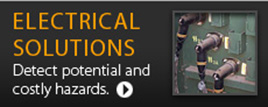


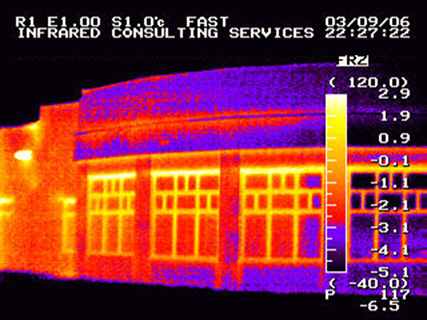

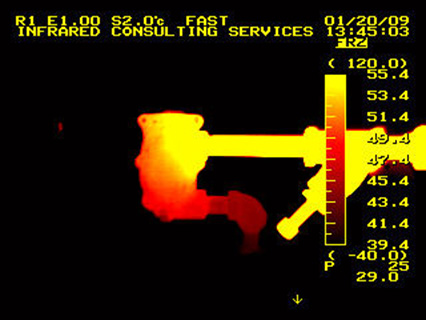
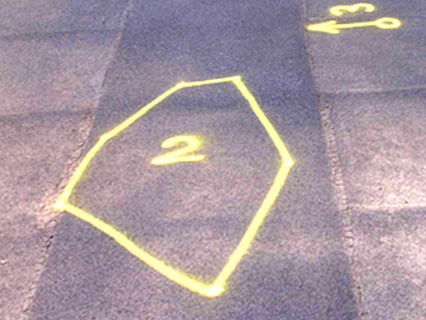
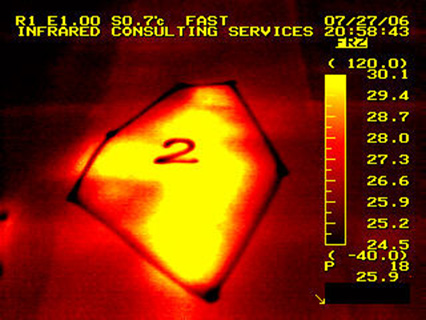
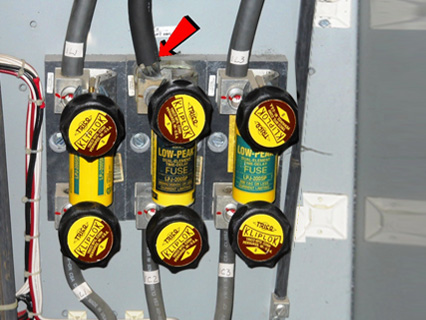
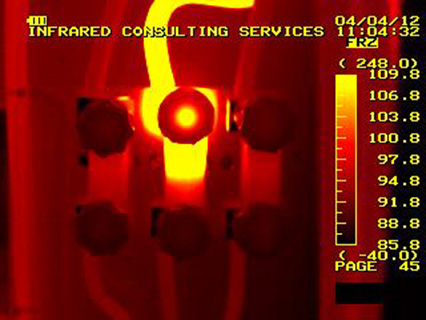
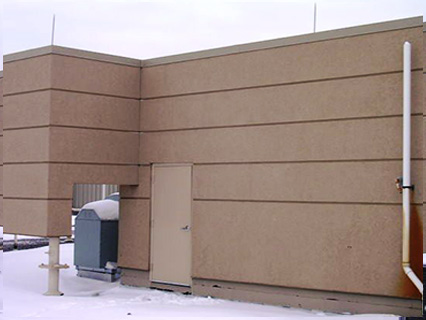
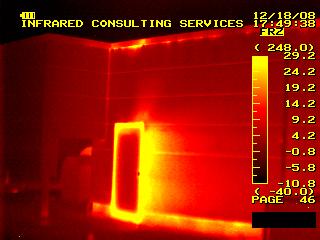
 By detecting problems before they occur and by pin-pointing exactly where problems might exist, Infrared Thermographic Testing has many benefits.
By detecting problems before they occur and by pin-pointing exactly where problems might exist, Infrared Thermographic Testing has many benefits.
 Learn more about our wide range of non-invasive, non-destructive inspection & testing services and if they are right for your needs.
Learn more about our wide range of non-invasive, non-destructive inspection & testing services and if they are right for your needs.
 Founded in 1988, Infrared Consulting Services (ICS) provides professional infrared electrical, NDT and building envelope inspection services nationwide.
Founded in 1988, Infrared Consulting Services (ICS) provides professional infrared electrical, NDT and building envelope inspection services nationwide.